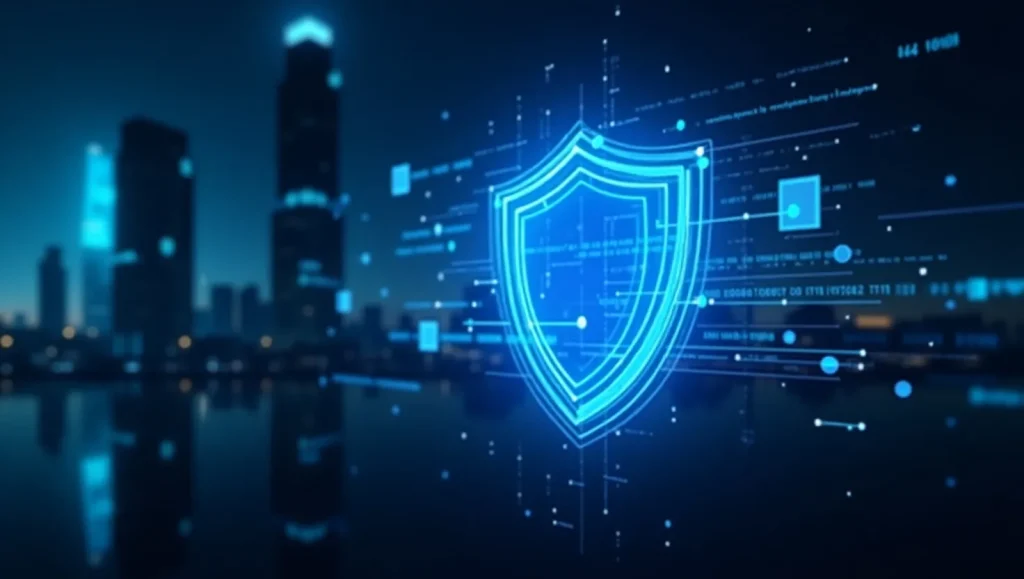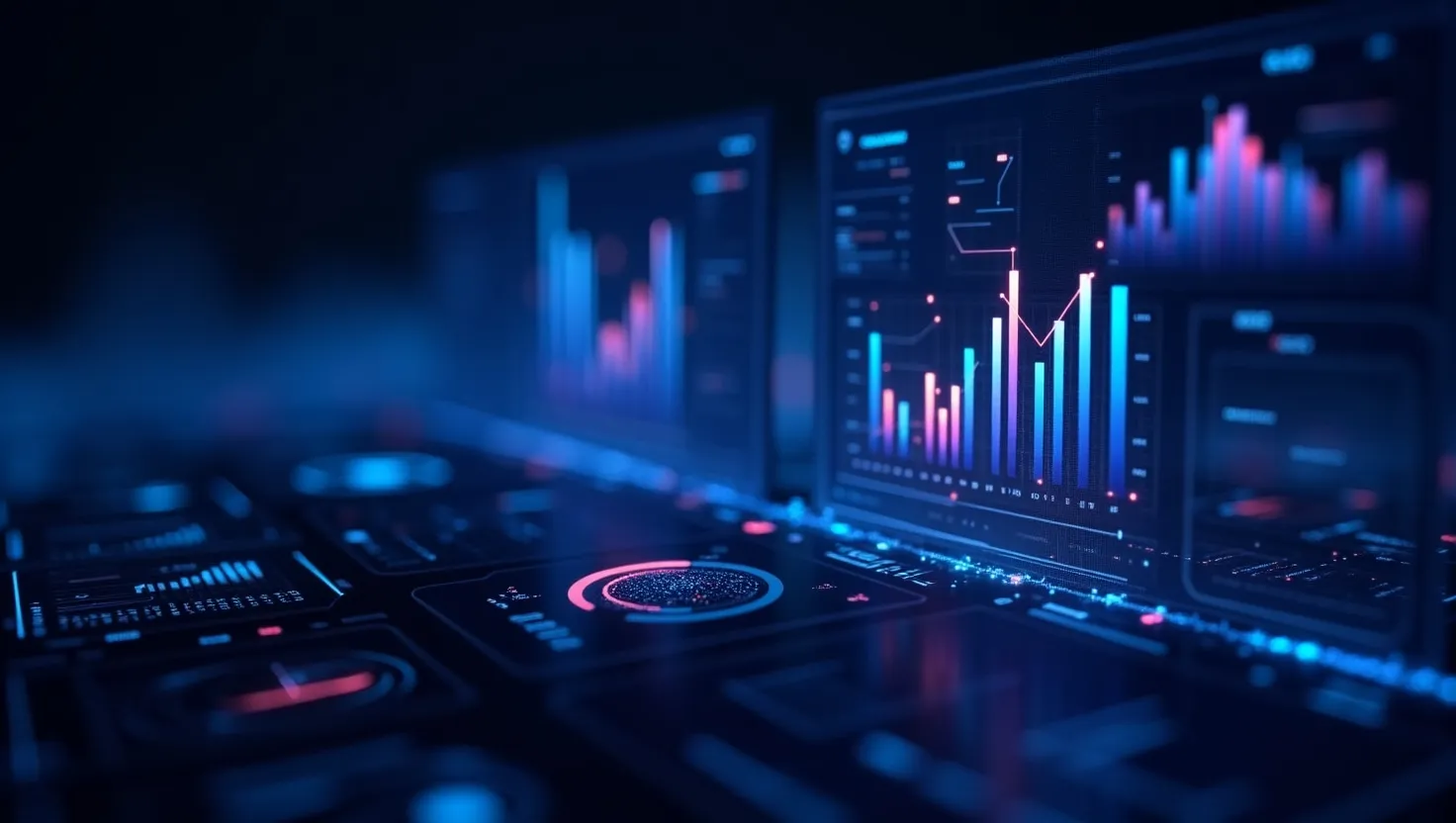
Cyber security technology will become the backbone of the domain for the protection of digital assets, data and physical structures from a variety of cyber threats. Escalating technology in all arenas of one’s life—be it at home, workplace or in government—heightens the value of security from computer-based threats. And this part of the industry does develop daily, offering a wide range of career scopes and educational and technological advancements. Thereby equipping an individual or an organization to be savvy on the dynamic field and its value in making sense of the confusing dimensions of the digital world.
Table of Contents
Definition and Importance ✨
Cyber security technology-the whole gamut of practices and tools that goes with cyber security-processes for the protection of computer systems, networks, and data themselves from unauthorized access, damage, or attack. It is essentially meant to keep information confidential, intact, and available.
Cyber security is far from cheap;
Organizations that keep their eyes open when moving into the ecommerce will almost inevitably experience such attacks. High-profile attacks would normally incur losses of millions to even billions of dollars, reputations of well-known organizations, and the various legal complications that arise from data breaches. Examples of well-publicized breaches include Equifax, Starwood Hotels, and the list goes on and on.
Cyber citizens-too-are ever at risk of things they do online, and such involve identity theft and financial fraud-in short, cyber security measures are imperative for everybody from the individual users to the large enterprise.
Core Components of Cyber Security Technology
Cybersecurity technology consists of processes and techniques aimed at securing digital information. Important aspects of cybersecurity technology include:
Firewalls-protect or restrict traffic between an internal network and the outside world. They block incoming packets that may contain computer viruses or malware and limit outbound traffic.
Intrusion Detection Systems (IDS)-IDS
detects anomalies in network traffic and alerts its intended recipients about a possible attack. This gives organizations the chance to respond more promptly to any impending threat.
Encryption-converting sensitive data into indecipherable code not recognized by any unauthorized user. Its importance in securing online communications and protecting stored data is immeasurable. Access Control-Access control allows for the definition of who has visibility or interaction with computing resources within a computing environment, restricting unauthorized persons from accessing sensitive information.
Every single one of the above is an essential element of any comprehensive cyber security framework, thus guaranteeing that both business and personal data is kept out of public view.
Information Security in Cyber Security
Information security relates to data protection, whether in storage, processing, or transmission-while cyber security generally covers protection of the hardware and software. Information security is specifically designed to address the security of data.
This specialization is most critical, given that data breaches often occur due to insufficient protection methods applied on sensitive data. By enabling information security to exist alongside cyber security, organizations may better protect themselves from the perils of data loss and theft.
Information security can, therefore, be defined as an obligatory component of any solid cyber security strategy; it represents the backbone of all actions taken to protect digital assets worth their salt.
Key Areas of Focus: Data protection, network security, malware detection
: In the very vastness of the cyber security technology, there are sections like data security, network security, and malware detection to be paying close attention to.
Data protection refers to the various protocols and technological means that can be used to protect sensitive data from unauthorized access, loss, or corruption. Organizations should regard personal data as they are dictated by regulations such as GDPR and HIPAA; doing so would show the organization conforms to some accepted standards, thus generating trust among clients and stakeholders.
Network security refers to maintenance measures for the integrity, confidentiality, and availability of the networks. This comprises firewalls, intrusion detection systems, and virtual private networks (VPNs), all being instrumental for denying unauthorized access and cyber attacks.
Last but certainly not least, malware detection typically refers to the part of the strategy that is able to detect and remove malwares such as viruses, worms, and ransomware since they could infect the system and threaten the integrity of its stored data. As a matter of fact, in all well-built strategies for the detection of malware, such cutting-edge technology is employed in pattern recognition algorithms that determine presence of such malicious behavior like machine learning.
This approach concentrating on these specific areas would aid an organization in developing cyber resilience that kept pace with the ever evolving threat landscape.
Types of Cyber Security Jobs
With numerous roles appealing to different interests and skill sets, diversity is sewn into cyber security jobs. Some of them are:
Security Analyst: He/she monitors and protects the internal network and systems of the organization against cyber threats. It may even involve conduct vulnerability analysis and implement countermeasures to secure his information.
Penetration Tester: Or what the world refers to them as ethical hackers. They replicate attacks to create weaknesses in systems, recommend solutions, and strengthen the security posture of an organization.
Incident Responders: They are responsible for security incident management and investigating breaches concerning recovery plans and damage reduction before restoring normal operations.
Chief Information Security Officer: The CISO is the most senior executive position in the organization’s information security program; they conceptualize policy and plans to manage risks of loss from cyber threats.
Such roles demonstrate the multiplicity of one’s options within the profession, as each can carve paths for oneself in accordance with his or her interests, strengths, and lifetime career goals.
Emerging Positions in Cyber Security Technology
Fast-changing technological circumstances keep erecting new roles and specialties in an evolving cyber security landscape. Positions are therefore created to countering contemporary challenges, which, in turn, presents opportunities for professionals to adapt and slowly grow entirely different skill sets in the process.
The task of collecting, analyzing, and interpreting data on threats directed at the organization falls under the duty of a threat intelligence analyst. The analyst must have continued awareness of the latest trending cyber threats, exchanging knowledge with various stakeholders to strengthen their defenses.
Moreover, with the growth of cloud computing, the demand has risen for cloud security architects who design and implement security solutions for cloud environments, keeping in mind the security of data during migration and from that point onward while in operation in the cloud.
Ultimately, with the increasing popularity of artificial intelligence and machine learning within business processes, another area seeing a rapid increase in demand will be the experts that know how to take advantage of these technologies to provide fortification.
Current Trends in Cyber Security Technology
As technology advances, so does the arsenal of procedures for cybercriminals. Newer trends in cyber security technology must be maintained in the minds of professionals who harbor the aim of sheltering the organizations in an invasion from the emerging threats and vulnerabilities.
Evolving Threat Landscape
It might be noted that the attacks are more sophisticated nowadays as a result of huge shifts in terms of threats with respect to their landscape. Ransomware, phishing, and social engineering threats are very much there for organizations as well as individuals.
Remote work opened up a whole new array of vulnerabilities: employees accessing otherwise sensitive information from anywhere or any device. And now, new types of cybercrime take advantage of all that attack surface, making it imperative to take an active approach toward cyber security-by not just implementing the network and system, but also user awareness and training.
Organizations should constantly analyze and re-establish security policies according to the threats. Modern surveillance tools should be the focus of investment to counter these developing threats with agile poses.
Innovations in Cyber Security Technology Stack
Cybersecurity technologies are a collection or bundle of technologies, software, and protocols working hand in hand to secure an organization’s intangible assets. This new breed under the stack has led to better defenses and newer capabilities.
Such included using artificial intelligence and machine learning into security solutions, but now, they contribute to quicker data-driven decisions to allow organizations to detect and respond to threats faster than they ever could before.
It is a new enhancement by the development of Security Orchestration, Automation, and Response (SOAR) platforms, which would enhance the security operations by automating repetitive tasks and cooperation of teams within the organization. Higher efficiency would thereby accrue with a decrease in human error, often a big contributor to breaches in security.
Such organizations need to constantly assess their capacities against potential threats and implement some of the newest tools to outrun others.
The Necessity of Threat Intelligence and Vulnerability Evaluations
Threat intelligence and vulnerability assessments are two central pillars of any sound cyber security strategy. The analysis of threat intelligence relates to the capability of the organization to be proactive about threats and risks by gathering and analyzing information about potential threats to an organization. Threat intelligence platforms can open an organization up to a considerable volume of information regarding new vulnerabilities, attacker techniques, and emerging trends. From this point, security teams can make an informed decision regarding resource allocation and risk management.
Vulnerability assessments regularly identify and prioritize weaknesses in the organization’s systems. These timely assessments allow the organizations to have prompt remediation of the problems so that the number of successful attacks is lower. These overall steps strengthen the organization in maintaining its defense against the evolving threat landscape.
Adoption of Artificial Intelligence and Machine Learning in Cybersecurity.
Technological advancements permit the creation of integrated systems and the deployment of various information technology assets dedicated to automated protection from the collective assault of internetworked resources.
These offerings have given birth to new defenses and capabilities, including embedding artificial intelligence and machine learning algorithms in security solutions to speed up time-consuming data-driven decision-making processes that allow organizations to detect and respond faster to threats than they could ever do before. Another new gain is the development of the SOAR (Security Orchestration, Automation, and Response) platform, which will improve security operations by automatically carrying out repetitive tasks and teamwork in the organization.
This results in a high gain but with a reduction in human errors, which is a major cause of security breaches. Such organizations should now keep on checking their capabilities with emerging threats and acquire the latest and greatest in tools to stay ahead of the competition.
Practical Applications of Cyber Security Technology
The effectiveness of cybersecurity technology is most evident in practice by how it is applied to different realms. Organizations leverage various tools and techniques to create a very formidable defense against cyber threats.
Examples of Good Cyber Security Technologies
Many technologies are critical in securing information systems. Some examples of effective cyber security technologies include:
Next Generation Firewalls– This type of firewall uses its basic functionality in conjunction with other advanced ones, such as application awareness, intrusion prevention, and even user identity management.
Endpoint Detection and Response– These are the corresponding features in EDR solutions that often check every endpoint for possible signs of compromise. This means that the security teams get speed when threat detection is made.
Security Information and Event Management (SIEM) Systems-
These technologies bring together and analyze security event data from every corner of an organization to provide real-time visibility of incidences, facilitating fast incident response.
The abovementioned technologies are a handful of the tools that give organizations the power to build and strengthen their cybersecurity positions.
Intrusion Detection Systems and Firewalls
An IDS and firewall is the backbone of any complete cyber security strategy. The IDS provides an examination of network traffic to uncover any signs of mischievous activity while notifying the administrator of possible incursions into the security domain.
The two kinds of IDS systems are network-based and host-based. Network-based IDS act upon traffic flowing across network segments, whereas host-based IDS seek to evaluate activity occurring on individual devices. In most cases, organizations will deploy the two kinds of IDS systems together to allow for maximum visibility and protection.
Whereas firewalls represent an organization’s first line of defense against unauthorized entry into its networks, their engineering permits them to support rules with respect to the inbound and outbound traffic to allow or deny the entry of possibly harmful data packets. The next-generation firewalls take these principles much further, through the application of deep packet inspection and advanced threat intelligence in order to thwart sophisticated attacks.
IDS and firewalls equally create a formidable combination that strengthens an organization’s defense against cyber threats.
Encryption Techniques for Data Protection
Encryption is the process of securing sensitive data by transforming it into an unreadable form so that unauthorized users cannot access it. Different variants of encryption exist for different purposes, symmetrical data encrypting endorsed by single key for both encryption and decryption. Symmetric encryption is fast and very efficient for encrypting large files but demands careful delivery of keys to prevent them from falling into unauthorized hands.
Asymmetric encryption is a dual-key system, with a public key for encrypting messages and private key for decryption. Here such holding like these are largely used in applications for secure communications, such as SSL/TLS protocols governing internet traffic. Using the strong encryption practice, an organization can ensure that their sensitive data remain safe even when breach occurs.
Access Control Mechanisms and Their Importance
Different access control mechanisms are crucial to manage the entry into sensitive information as well as systems.Organizations, through appropriate permissions, can significantly reduce chances of intrusion into unauthorized access.
Role-based access control (RBAC) involves assigning roles to users while administering their permission to use a system.it thus accelerates processes for granting as well as revoking access rights. RBAC allows for more streamlined administration and increased security since users will access only the data that is appropriate to the level of their role.
Multifactor authentication (MFA) provides increased access biometrics where several forms of verification are required before a user is allowed to access systems. Indeed, the increased credential levels mitigate the risks found within any compromised credentials, further making the organization secure with unauthorized access.
Thus, effective access control mechanisms are very important clearly to the integrity and confidentiality of sensitive information from cyber mischief, which makes them a very important point within cyber defense strategy in terms of access control mechanisms.
Conclusion
Cybersecurity technology is the area that basically protects the digital assets and infrastructure of an organization from a barrage of cyber threats. The landscape of the cyber risks keeps changing, and that calls for an ever-increasing demand for qualified professionals, for new technologies, and integrated security solutions. And education and training empower an individual to pursue a career in high-paying jobs in an ever-changing industry.
The organizations, therefore, should be aware of the trends and developments in cyber security technology and keep evaluating their position to counter the new threats. Hence the also-building-in-culture of security awareness and collective engagement will ensure an atmosphere for individuals in organizations to take sea voyages in the murky waters of the cyber world with resilience against the ever-adaptive threats.
It is because of the fact that cybersecurity technology is indeed an area that protects the digital assets and infrastructures of the organizations being subjected to a barrage of cyber threats. The landscape of the cyber risks keeps changing, and that calls for ever-increasing demand for qualified professionals for new technologies and integrated security solutions. And education and training empower one as an entry point into high-paying jobs in a changing industry. Hence the organizations also-building-in-culture of security awareness and collective engagement will ensure an atmosphere for individuals in organizations to take sea voyages in the murky waters of the cyber world with resilience against the ever-adaptive threats.
FAQS
How do people defend themselves against threats on the Internet?
Strong passwords, two-step verification, ignoring all suspicious links, updated software and antivirus programs are effective weapons one can use.
Emerges what way is artificial intelligence as affecting the now and future of cybersecurity?
AI would ramp up the threat detection and/or response speed by learning patterns, spotting anomalies, and automating cybersecurity processes. The craziness continues: the cybercriminal now tries to use AI for attack against its own purposes.
How do organizations set up good measures of cybersecurity?
The business must put in such provisions as firewalls and encryption and training of workers in security audits, incident response plans as well as conformity with standards like GDPR, HIPAA, or ISO 27001.
Give the meaning of ransomware and how organizations can still prevent it?
Ransomware is malware that encrypts files on a computer and immediately demands money from hackers to de-encrypt them. Counteracting measures include planned backups, network segmentation, email filtering, and careful training of the staff on the perils posed by these programs.
Why are governments and critical infrastructure with cybersecurity high priorities?
Governments, along with infrastructures like power grids, healthcare systems, and banks, are viewed as the primary attack targets. Any one of these would be a very significant threat to national security, economy, and public safety.
What are those zero-day vulnerabilities and how do they cope with them?
A zero-day vulnerability could be understood under the concept of a software program known as a bug or programming error that no one yet knows about and is exploited by cybercriminals until the developer has time to patch it. Mitigation measures consist of threat intelligence systems sharing information, fast patch management, intrusion detection systems, etc.

